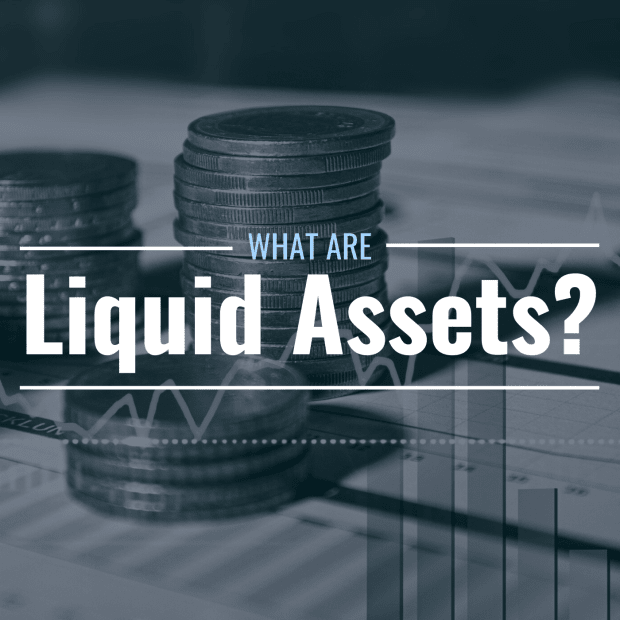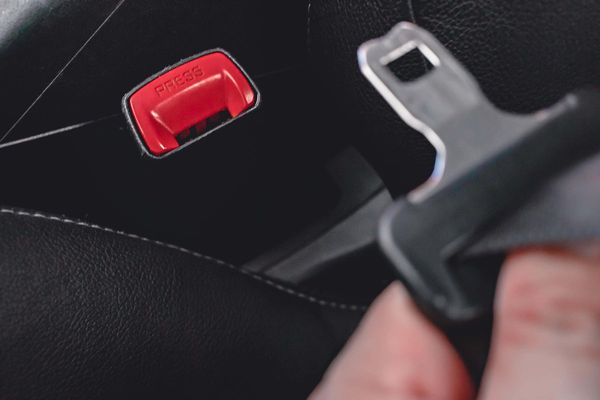
Marcus Millo from Getty Images; Canva
Liquid assets are a necessary financial strategy for individuals—especially those who need a fast cash infusion and might otherwise have their money tied up in illiquid—or hard-to-access— financial accounts.
Consider a household emergency, like a home destroyed by a hurricane or a son or daughter being stuck in an overseas country and needing money right away. In those instances, immediate access to cash becomes a priority and thus underscores the importance of liquid assets.
By itself, having liquid assets isn't a complete financial strategy.
Instead, it's a component of a larger investment strategy that helps the asset-holder get his or her hands on cash when needed.
That's the ultimate benefit of a liquid asset—the ability to leverage it and turn it into cash in a timely manner.
What Are Liquid Assets?
By definition, a liquid asset is a financial asset that the owner can convert into cash, ideally without the asset losing any value. Good examples of liquid assets include the following:
There are forms of assets that technically don't fall into the category of liquid investments, which by definition, must be converted to cash quickly (like a bank account or stock portfolio.) These assets, which do hold value, aren't as liquid as stocks or bank accounts:
- A home (or any real estate) that's owned by the asset owner, or a vehicle that's held by the owner
- A small business or partnership in a business venture that has appreciated in value and could be in demand if the need to sell the business arises
- Collectibles, like valuable jewelry, art, or even comic books, if they're rare and sought-after
Then there are the shades of gray in the world of finance when it comes to liquid assets.
For example, from a technical viewpoint, credit card accounts can also be converted into instant cash, as long as they're able to take money out of an automatic teller machine.
That said, credit cards don't really qualify as a liquid asset as the cardholder is borrowing the money in hand, and doesn't hold it as an asset—and asset ownership is a "must-have" to be a liquid asset.
Liquid Assets: Banks vs. Digital Payment Services
Beyond having cash in your wallet, in a home safe, or otherwise in easy reach, the most "in demand" forms of personal liquid assets are savings and investments.
Of those options, bank savings is the purest liquid asset, as you can use your bank ATM card to immediately access your checking or savings account and have $100 in your hands in a minute's time.
There's a school of thought that online payment sites like PayPal and Venmo, among others, and digital-based asset vehicles like Apple Pay AAPL or Google Pay GOOG are liquid assets, but that's not necessarily the case. To get cash right away from PayPal PYPL, for example, you have to withdraw money from your account, wait for it to clear (although you can pay a fee to get quick access to the money), and then spend the money.
While that meets the loose definition of a liquid asset, there are some important caveats that separate bank accounts from digital-based payment accounts, including:
Banks Can Deliver Actual Cash to You Right Away
As long as you own a bank account and can find either a bank branch or an ATM machine, you can gain instant access to cash money. You can also gain access to cash, through an extra step with a PayPal or Venmo, but the process takes longer and thus dilutes the instant liquidity access of pure liquid asset vehicles like bank accounts and ATM cards.
Banks Pay Interest, While Credit Cards and Online Payment Accounts Do Not
While banks charge fees for turning assets (i.e. account holdings) into cash, via a bank teller window or an ATM, they also pay consumers for the right to hold their cash in an account—and that's something a PayPal or Venmo doesn't do.
It may seem like a small variance, but liquid assets should offer a value proposition, and paying interest on a bank account, as small as that interest may be, makes bank accounts a better liquid asset than credit cards or online payment providers.
Investments as Liquid Assets
No question, investment vehicles are also a top-tier member of the liquid asset group—especially stocks and stock-related funds.
That's not to say all investments are strictly defined as being liquid asset vehicles. Stocks, bonds, options, currencies, and money market funds, while holding assets, all take longer to sell or liquidate and get the cash in hand right away, which puts them a rung below bank accounts on the liquid asset ladder.
While still a valued member of the liquid asset club, there are better ways to get quick access to cash than stocks, bonds, and other market-related investments. That said, owning stocks and bonds, among other investment vehicles, certainly provides a pathway to liquidity—even if it's not immediate.
What Are the Best Liquid Assets for You?
While cash, itself, is the king of the personal financial liquid asset pyramid, the following savings and investment vehicles should prove to be your best "go-to" options for quick cash when you need it:
Bank Savings or Checking Accounts
Having a savings account at your disposal, along with digital access and an ATM card, is your easiest means of getting money via liquid assets. Getting your cash is easy, and you can use your own bank's ATM machines to avoid paying cash withdrawal fees.
Bank Money Market Accounts
Banks also offer higher interest rate money market accounts (they pay, on average, .015% of assets, as opposed to 0.06% for bank checking accounts.) While you will need to maintain a minimum balance, money market accounts enable you quick access to cash, when needed.
Bank Certificates of Deposits
Bank certificates of deposits (CDs) also offer good rates of return (up to 0.75% from select financial institutions) and, like bank savings and checking accounts, are protected by the Federal Deposit Insurance Corp. That means your money is here when you need it, and it can be easily accessed via a bank CD.
Yard Sale Assets
Don't laugh. You can turn your household goods and collectibles into quick cash—as soon as a single Saturday morning—and put potentially hundreds of dollars in your pocket. Old albums, golf clubs, jewelry, and man-cave bar mirrors and lights are alternative forms of liquid assets and can be converted to cash quickly. (A bonus—you can also sell them on Amazon and eBay, in addition to other online sales sites.)
The Takeaway on Liquid Assets
Any asset of value that can be converted into quick cash is, by definition, a liquid asset, as long as that cash conversion has little or no impact on that asset's value.
So long as you own such an asset, and there is a market and demand for it, you're in business.
The more liquid assets you own, the easier it becomes to transform them into cash, if and when you need it. That alone makes having liquid assets a necessity for any personal financial consumer who believes that cash really is king.







